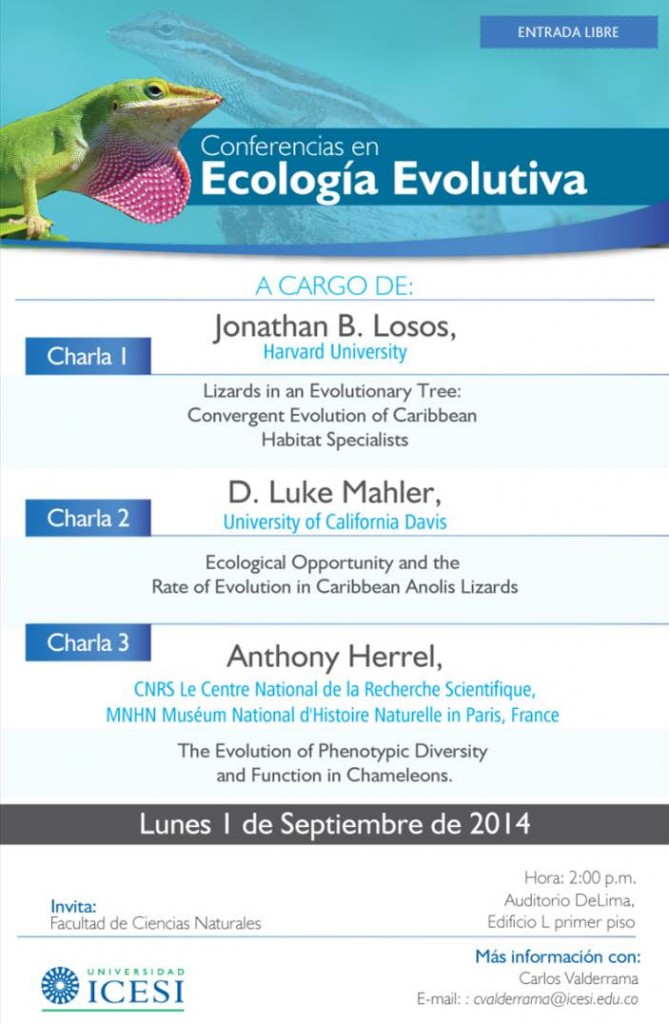Lizards in an Evolutionary Tree: Convergent Evolution of Caribbean Habitat Specialists
Jonathan B. Losos, Harvard University
Caribbean Anolis lizards have become a textbook case of replicated adaptive radiation. On each island in the Greater Antilles (Cuba, Hispaniola, Jamaica and Puerto Rico), anoles have radiated for the most part independently, producing a series of habitat specialists, called ecomorphs and named for the part of the habitat they usually use (e.g., twig, trunk-crown, grass-bush). Comparisons across islands indicate that the same set of ecomorphs has evolved on each island (with a few exceptions). The ecomorph phenomenon was initially suggested based on morphological data, but has been confirmed using analysis of DNA sequences. Recently, examination of fossils preserved in amber has demonstrated that most of the ecomorphs were present at least 20 million years ago.
Ecological Opportunity and the Rate of Evolution in Caribbean Anolis Lizards
D. Luke Mahler, University of California Davis
A major question in evolutionary biology is whether ecological interactions among species affect the rate of evolution as organisms diversify. According to the ecological opportunity hypothesis, evolution occurs most rapidly in the absence of competition, and slows as competitors accumulate during diversification. I tested this hypothesis by measuring the rate of evolution in radiations of Anolis lizards on the four Greater Antilles islands. As predicted, anoles on these islands exhibited an early burst of evolution in traits important for habitat use, and the rate of evolution subsequently declined. It is less clear whether ecological opportunity has affected the rate of evolution in radiations of anoles in mainland South America and Central America. Although this relationship remains poorly understood, preliminary studies suggest that mainland anoles are at least as diverse in morphology and ecology as their island counterparts.
The Evolution of Phenotypic Diversity and Function in Chameleons.
Anthony Herrel, CNRS Le Centre National de la Recherche Scientifique, MNHN Muséum National d’Histoire Naturelle in Paris, France
Chameleons are well known for their unusual morphology including independently moveable eyes, grasping feet, ability to change color and their ballist tongue. In the present talk I will review some of the morphological specializations of the tongue and locomotor system in the context of the ecology of these animals. The ballistic tongue is unusual as it possesses a suction cup at the front allowing chameleons to capture very large prey relative to their body size. This specialization depends on the action of novel muscles known only in chameleons. Although this suggests that chameleons may be specialized to eat large prey, ecological data remain surprisingly scarce. The locomotor is equally specialized and differs from that in other lizards in the presence of opposable toes allowing chameleons to hold on to narrow substrates. Anatomical studies suggest variation in the underlying osteology, but the ecological correlates thereof remain unclear. However, within a closely related group of South-African dwarf chameleons the habitat use (i.e. perch diameter) is closely related to 1) the gripping strength and 2) the size of the hands and feet. This suggests that variation in hand and foot morphology is indeed adaptive and has the grasping hands and feet evolved early-on in the evolution of the group as an adaptation to an arboreal life.
